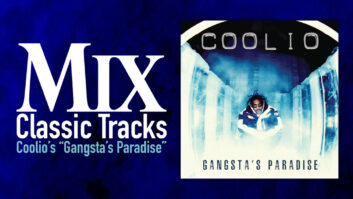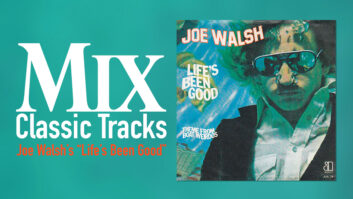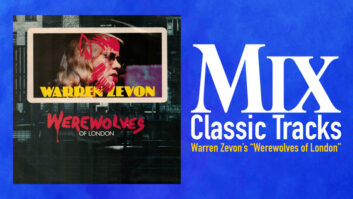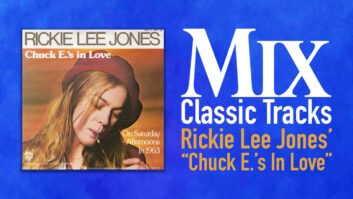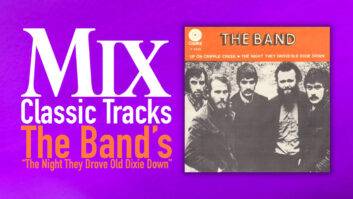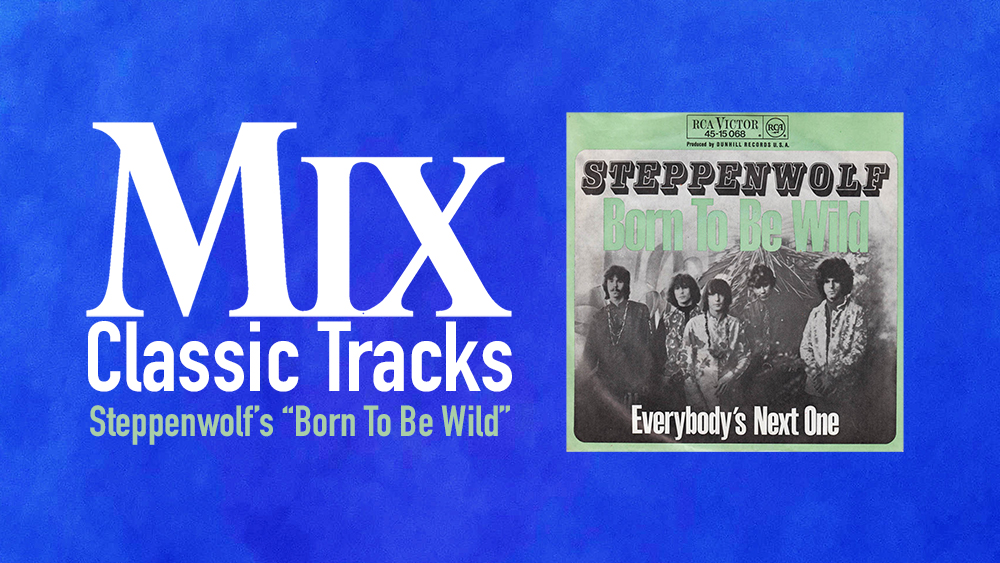
The road to becoming a rock ‘n’ roll icon is stranger for some than others. Take John Kay—the voice and face of the L.A. band Steppenwolf—for example. He was born Joachim Fritz Krauledat during World War II in what would later became East Germany. His father was a German soldier killed on the Russian front a month before his birth in 1944. He grew up listening to American rock ‘n’ roll on Armed Forces radio but didn’t start playing music and writing songs until after his family emigrated to Canada in 1958; in fact, Kay says he learned English partly from listening to records. He was steeped in rock and blues by the time he joined his first major band, The Sparrow, in Toronto in the mid-’60s. They played in a few key U.S. cities, signed a deal with Columbia and cut an album’s worth of sessions, but nothing much came of it. Along with Sparrow organist Goldy McJohn and drummer Jerry Edmonton, Kay relocated to L.A., changed the name of the band to Steppenwolf (after a Hermann Hesse novel in vogue with college students) and signed with Dunhill Records, home of The Mamas & The Papas and others.
With an album’s worth of tunes, including a few originals—Don Covay and Steve Cropper’s “Sookie Sookie,” Hoyt Axton’s “The Pusher” and a song by former Sparrow guitarist Dennis Edmonton, then going as “Mars Bonfire,” called “Born to Be Wild”—Steppenwolf marched into United Western Studios one day in early 1968 with producer Gabriel Mekler to record their first album. They were, however, not pleased with the results, says Kay. “The engineers kept telling us to turn it down, but we wanted to play loud! The recorded sound was too tame. We had heard good things about American Recording Company, a studio on Sunset Boulevard, so we went over there and re-tracked everything with Richard Podolor, who owned the studio, and Bill Cooper. We immediately fell in love with the sound they captured.”
By the time Steppenwolf walked into his studio, Podolor had already achieved a real measure of success in the music business. A session guitarist—both he and Cooper played guitars on “Go Little Honda,” a hit for The Hondells—Podolor was also a successful songwriter. As players themselves, Polodor and Cooper understood that rock musicians needed to interact at a high sound pressure level for them to be comfortable while tracking.
“American Recording was the first independent studio in L.A.,” says Podolor. “My father and I built a console back in 1959, and it was the first solid-state console in the business. We initially ran it on car batteries! We purchased a pair of LA-2As directly from Bill Putnam, who was the head of UREI at the time. We used them on John’s vocals.
“We had a Scully 8-track tape recorder,” Podolor continues. “We’d roll off some of the high end wherever we could because the Scully had an oscillation that could be disturbing. With Steppenwolf, we were dealing mostly with the fundamental frequencies so we weren’t looking for the upper harmonics! When we got a bass drum sound or even a piano in some cases, we’d filter out some of the lows and the highs and pinpoint the frequency that we wanted.
“Our policy was that we wanted a band to sound as big on playback as they would onstage. Steppenwolf had Fender Dual Showman amps that they turned up to 10. That was fine with us! We were the first guys to throw a mic on the bass drum to isolate it,” Podolor claims. “Back then, we’d use a Shure 556 on the kick and a Syncron ST—the first solid-state cardioid mic—on the rest of kit. The Syncron ST had a tremendous amount of rejection on the back side so it let us get a great amount of separation when we were recording a band like Steppenwolf live. We’d put somebody else behind the drums. A total of four or five STs were used on the Steppenwolf sessions—drums, guitars, and even vocals.
“We liked the Sony C37 tube mics and tracked John’s vocals with them. Later on, when I produced Three Dog Night, we’d pull out a C37 all the time. That was a warm mic, quite forgiving, with more presence than a U47 and less sibilance. We had a trick we used all the time with singers, where we’d have them sing into a mic that wasn’t turned on! We’d set up a C37 about two inches off to the right and track it without the singer knowing it was being used. John had no trouble getting his sound, though, and so we didn’t have to use that ruse.
“John had so much style. He actually could produce a very beautiful tone, and if he had had a good night’s sleep, he could sing a ballad with the best of them. But during those early sessions [the group tracked 11 songs in two days], we encouraged John to go for the gravel. His voice actually had a sound that had a bit of a fuzz tone effect to it, and that blended perfectly with the instruments—particularly the Lowry organ the group used, which had a cracked speaker! People think we used a Hammond B3 with the Leslie cranked up, and in fact the studio did have a B3, but the sound of that Lowry was perfect for the group.”
Bill Cooper remembers being immediately impressed with Steppenwolf. “It’s rare when all of a group’s members contribute something unique to create an identifiable sound, and Steppenwolf had that. It wasn’t about virtuosity. There was a collective sense of what their sound should be, and all of the players helped define it. Richie and I then added a little bit.”
Podolor says that he and Cooper used the tools that were available to help the sound congeal. “For example, I mentioned that John’s vocals had a gravelly sound that seemed to have a touch of fuzz tone to them. Rushton Moreve played the bass quite loudly, and the guitarists, particularly Mike Monarch [then a 17-year-old who’d been playing for about two years], also played loudly. To make sure that the bass didn’t get muddy and drowned out, and to create a blend in the sound, we sneaked a bit of fuzz tone onto it. We’d back the fuzz knob down—going through the device was itself the effect we were going after, not actually using much of the fuzz sound. It was a trick that helped create a space for the bass that kept it from being eaten up by the guitars. We also Y’d out the bass and recorded both its direct and amped sound using a UTC A11 transformer. The idea was to pick up the fundamentals from the A11 and the grunge from the amp.”
Classic Tracks: Creedence Clearwater Revival “Fortunate Son”
After two days of tracking, the group sat down to mix with Podolor and Cooper. “We used Ampex 350s as mixdown decks,” says Podolor. “These were ¼-inch machines running at 15 ips. Ampex also had the 351 out at that time, but the 350 was fatter. When we mixed down, we always A/B’d the console and the tape and we wouldn’t stop until you couldn’t hear the difference between the two.
“We never mixed in a single pass, and Bill was a wizard at cutting tape. We’d mix a bar at a time if we needed to, and generally made two mixes with different panning. Today, the bass and drums are normally sent up the middle, but back then it was routine to have the bass, drums and organ on the left, guitars on the right and John’s vocal in the middle so that nothing was competing with his voice for space. I was in a supermarket once and heard ‘Born to Be Wild.’ Half our side was in aisle 20 and the other was about 10 aisles away! Still, that’s the way we worked back then, and the goal was that even if one side goes out, you’d have a good record. Ultimately, we provided the label with a mono version, as well.”
After touring with Steppenwolf in a variety of incarnations, Kay recently hung up his traveling shoes to concentrate on writing and the work of his foundation (www.mauekay.org). His memories of Steppenwolf’s first recording sessions, however, remain vivid. “No one had a clue that ‘Born to Be Wild’ was going to be a hit,” Kay recalls. “During the sessions, it got no more or less of a response than anything else we were working on. ‘Sookie, Sookie’ came out earlier and did fine, but it got no airplay in the South. It was vaguely suggestive, and our sound didn’t make it clear whether we were a black or white band. A song called ‘A Girl I Knew’ was actually the first single off the album, but it got very little airplay.
“We knew we’d only have the opportunity to release one more single off the album before it got buried,” Kay continues. “The label was leaning toward ‘Everybody’s Next One,’ a song that I’d co-written with our producer, Gabriel Meckler, but our manager, Red Foster, was also a disk jockey at KRLA in L.A., and he put feelers out to friends of his who were also jocks, and the consensus opinion was that ‘Born to Be Wild’ was the strongest contender.”
“Born to Be Wild” made a rapid rise to Number 2 on the pop charts (“Magic Carpet Ride,” from their sophomore album, called The Second, released at the end of 1968, would also crest at that chart spot) and launched Steppenwolf into the pop stratosphere. The street cred of both the song and group received a boost when “Born to Be Wild” was incorporated into the soundtrack of Easy Rider a year after its release. It’s been covered often since, appeared in many films and commercials, and countless musicians continue to be influenced by the rifle shots of “heavy-metal thunder” (as the second verse says) that Steppenwolf set into motion.
This Classic Tracks article was first posted July 1, 2008.
